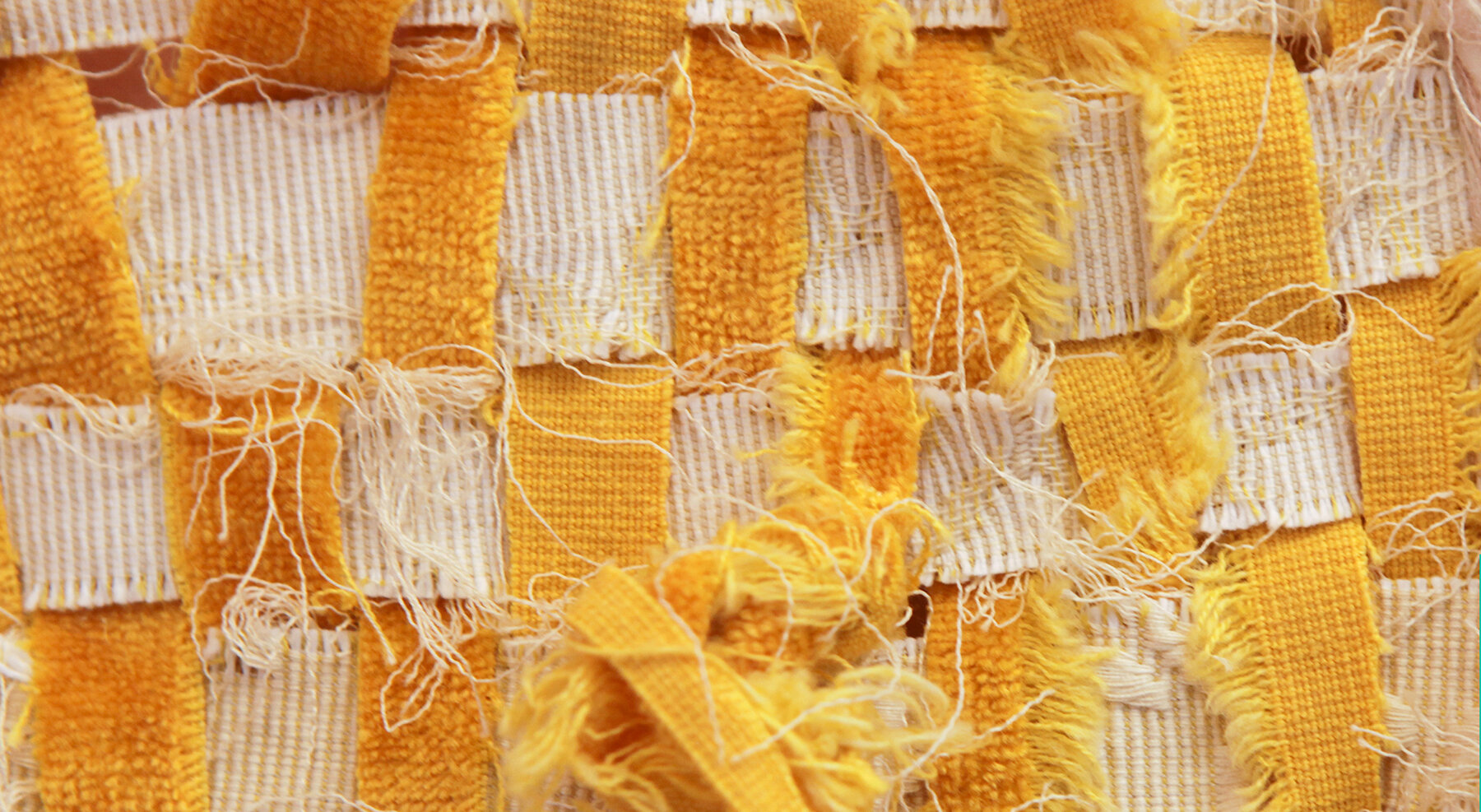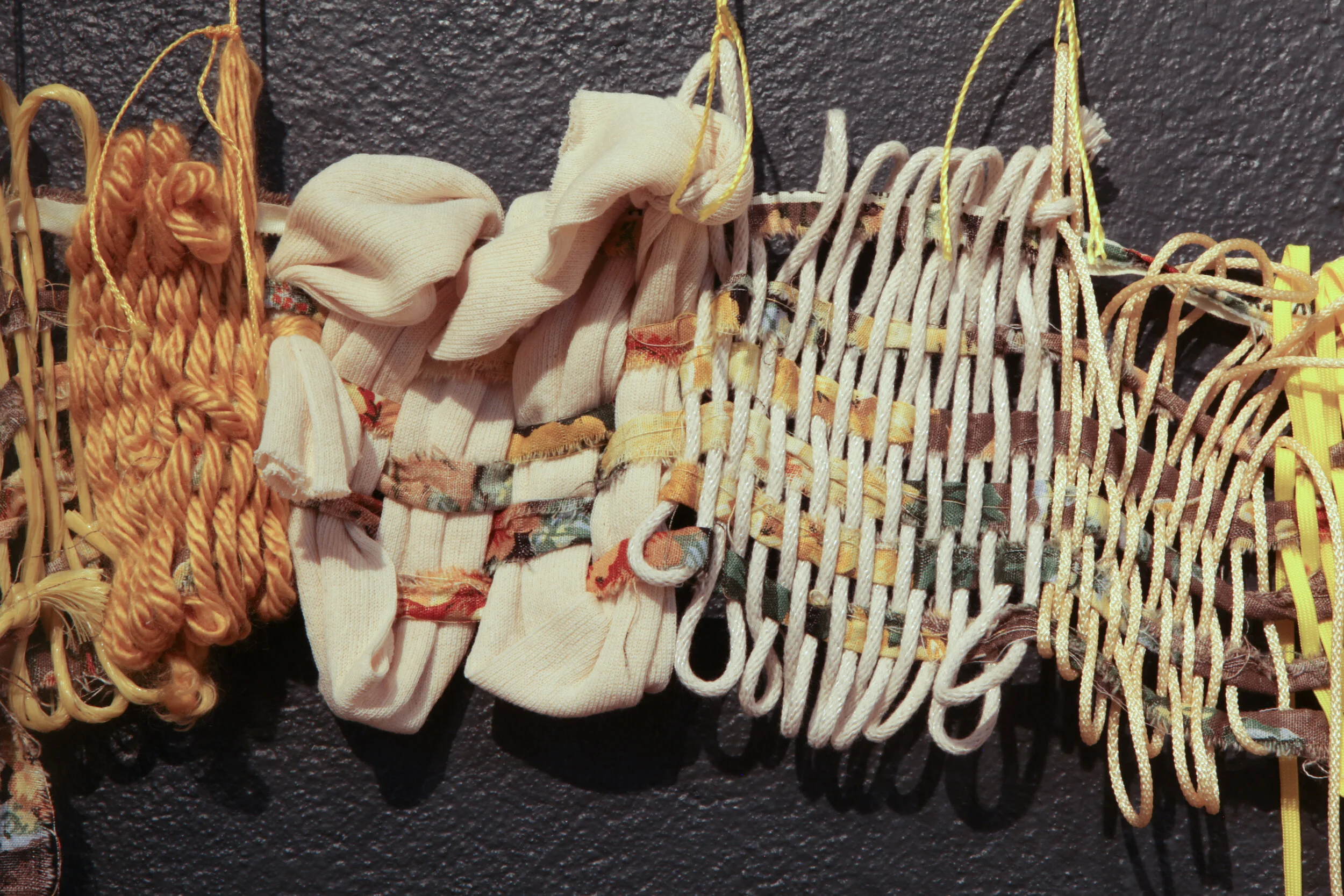
Reweave: 2021
Jade Walker
Reweave: 2021
…is an exhibition consisting of two parts: Mire + Mend, which is outside the Elisabet Ney Museum, on its grounds; and Birdsong, located inside the Museum, opening soon.
Commissioned by the City of Austin Cultural Arts Division as part of the Arts Responders program, Jade Walker’s installation Mire + Mend continues her series of woven outdoor sign structures. Walker invited friends, family, neighbors, and community members to join her in the weaving, inviting shared optimism through collaboration. Using bright colors and diverse materials, Mire + Mend recognizes the challenges of the past year and offers brightness, communal experience, and soft materials to indicate hope about the future. The woven sculptures stand-in for traditional signage, exploring color and patterning in the place of language.
Birdsong is an indoor installation recognizing the demise of our planet and the ways in which humans battle one another in the face of this conflict. Walls are covered with deactivated slingshots filled with woven materials in shades of yellows, long woven pieces filled with various materials or thorn branches of the Honey Lotus tree. Empty structures fill half the room almost like a skeleton as the other side offers abundance of color and texture. The room is divided/blocked by a large scale set of slingshots. There are materials in the installation such as wooden slingshots and thorny obstacles each are a call to arms in the fight against climate disaster.
These objects, paired with the inherent mending qualities of woven fabric, string and rope, symbolize repair and comfort. Walker explores this combination as a metaphorical representation for the balance between activism and care, a necessary balance in facing the ecological challenges of the present. Using natural materials in hopeful shades of yellow, Walker asks the viewer to look at what is around us and listen for birdsong as a marker of safety and potential.
Reweaving is to repair damage to a garment in a virtually invisible way by hand weaving new material and replicating the garments original structure. Both Mire + Mend and Birdsong utilize similar weaving structures but one asks others to bring their own materials and take part in a communal fashion to mend while the other advocates observation and action through other means. Together these works create the overall project, Reweave: 2021.
.
Artist’s Statement
In my installation-scale sculptures, I ask the viewer to engage with feelings of comfort, while being confronted with imagery that suggests disease and bodily injury. My work is abstract, without gender or apparent narrative, but invites the viewer to explore their relationships to materials, familiar objects, and color choices in contrasting situations of softness and discomfort. The body is always my starting point, in form or essence. Many of my objects use bodily materials and natural fabrics to remind us of our skin and appendages: in some works, I rely on models of prosthetics or physical support systems, such as crutches or mallets. In others, bulbous forms and knitted shapes mimic organs. I often use poetry to elicit images of the body. In other installations, I invite community contributions as a tool for connecting the viewer back to their body.
In my recent work, I explore the resistances we have to acknowledging our own bodies, considering how we can locate healing and mending in our physical forms. Our difficulty physically connecting with others parallels the ways individuals interact in society. The way our bodies hold memory requires traumas to be shoveled out through somatic approaches: for example, identifying a visceral sensation around a material, or instinct to flee upon seeing a stockpile of weapons, indicates a personal history, important to address. I ground my work in this kind of body location. Sometimes threads of memory are located in my work in the form of easily-recognized objects that seem mundane but are packed with notations from home or childhood. I rely on practices that challenge the viewer’s ideas of fiber-based traditions and materials, combining industrial materials with handicraft or layering fabric as a skin or topcoat to objects not generally identified as organic: i.e. an iron weight from construction can stand-in for a muscle or arm when paired with a knit lung. In my mind, these combinations personify an object while helping identify the shape, weight and form of our bodies.
My studio is filled with piles of antiquated medical equipment and text books, images of prosthetics as well as fabrics, plastic-cast body parts and so much thread. I draw with a needle, and most of my work walks a line between cozy and alarming: we want to reach in and touch the work’s soft surface, but we might be afraid that what we confront connects us to our bodies, inducing a stomach churn or recoil. I ask how we can feel a social and historical accountability if we are not able to locate the tensions between bodily sensations and our actions? What is the best course for healing if the hurt is not physically located?
I continue to question how to tap into the body and its knowledge in visceral ways in my work. Each project is rooted in a personal narrative of my own, a strict set of parameters, and a materials list that focuses me. My intention is always to follow the threads of an investigation, pushing my audience to walk the line of comfort, while holding space for deep self reflection and reflective healing.




